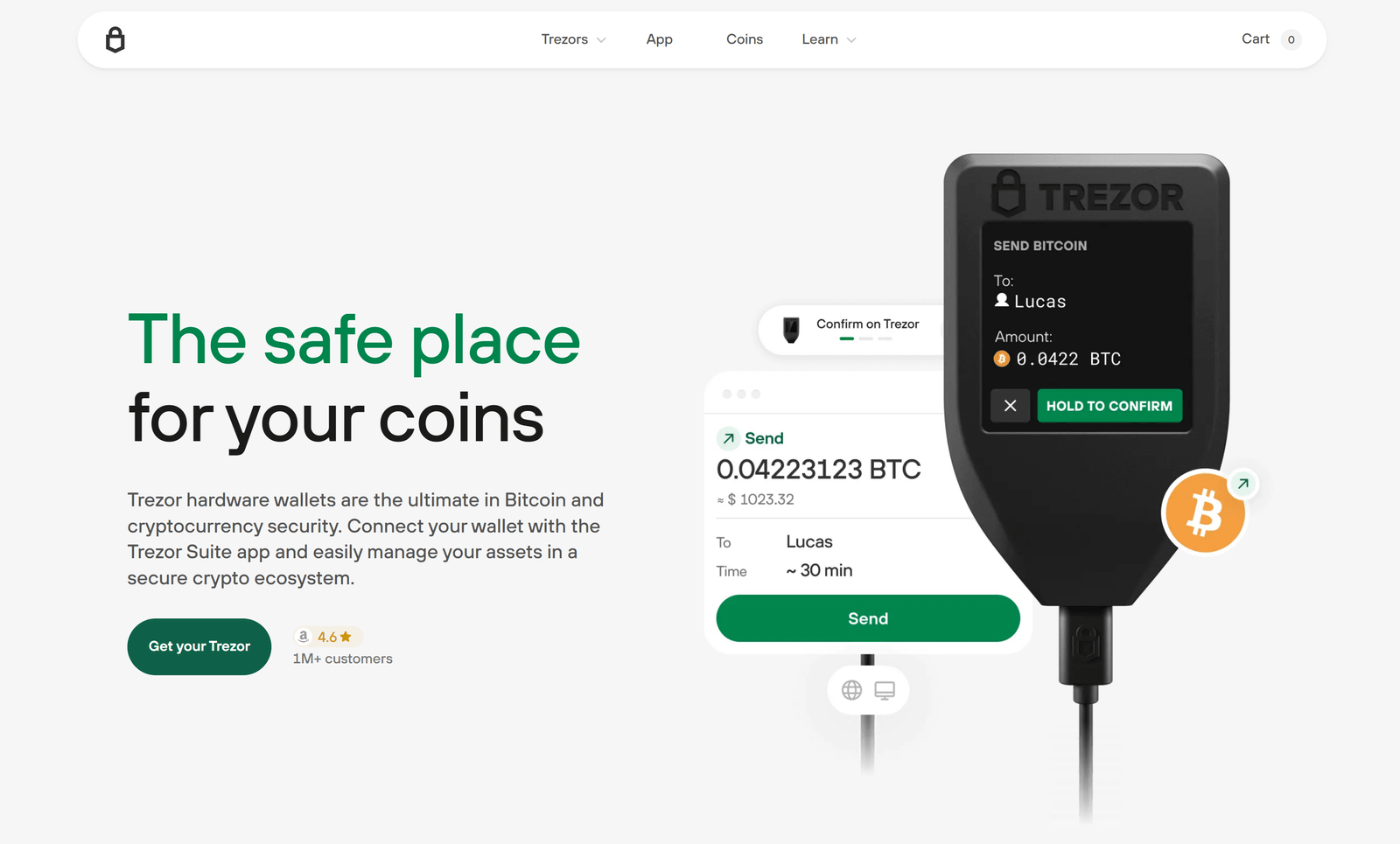Trezor.io/Start – Hardware Wallet Setup and Getting Started Guide
This page explains what users typically do when they visit Trezor.io/Start to begin using a new Trezor hardware wallet. It describes the setup process, device initialization, firmware installation, PIN creation, and how to safely back up your recovery phrase. This is a neutral, informational guide — no links or downloads are provided here.
Introduction: Beginning Your Trezor Journey
Trezor.io/Start is the first step for anyone setting up a Trezor hardware wallet. It provides official guidance for initialization, device configuration, and understanding the principles of hardware-based security. When you unbox your Trezor device, it arrives sealed and uninitialized, meaning no private keys exist until you create them securely within the device during setup.
The purpose of the start process is to ensure you have full control over your cryptographic keys and that no third party, including the manufacturer, can access your funds.
Step 1: Connecting the Device
The setup begins by connecting your Trezor to a computer using the supplied USB cable. Once connected, the device powers on and displays its welcome screen. You will be guided to continue setup through a companion application, which allows secure communication between your device and computer.
The hardware wallet’s display acts as your trusted screen. Only follow instructions that appear on the physical device to avoid phishing or malicious interfaces.
Step 2: Installing Firmware
A brand-new Trezor device does not come with firmware preinstalled. Installing firmware ensures that the correct, verified software is running on your hardware. The device will ask for your confirmation before installation begins, and once completed, it verifies the integrity of the firmware. This step prevents tampering and ensures that only authentic, verified code controls your private keys.
Step 3: Creating a New Wallet
After firmware installation, you can create a new wallet. During this process, the device generates a unique set of private keys and a recovery seed. This wallet exists only on your Trezor and cannot be duplicated elsewhere. No keys are ever exposed to your computer or online services.
Step 4: Writing Down the Recovery Seed
The recovery seed is the foundation of your wallet. It is a sequence of 12, 18, or 24 words displayed on the Trezor screen. Write these words carefully on the provided recovery card and store them offline in a secure location. Never type or store the seed digitally. If your device is lost or damaged, this seed allows you to restore access to your assets.
Step 5: Setting a PIN Code
Once your recovery seed is safely stored, you will be prompted to create a personal identification number (PIN). This PIN protects your device from unauthorized access. Entering it incorrectly multiple times will trigger a delay, significantly slowing down any brute-force attempts. The PIN is verified only inside the device and is never shared with external systems.
Step 6: Exploring Your Dashboard
After setup, you can access your wallet dashboard through the companion application. Here, you can view balances, generate receive addresses, and prepare transactions. Every transaction must still be approved on the device screen, ensuring complete user control.
Understanding Recovery and Backup
The recovery seed is the most important element of your wallet’s security. Losing it means losing access to your funds. Always keep at least one backup copy in a secure, fireproof, or metal storage option. Never take photos of the seed or store it in cloud storage. Only enter the seed directly on your device when performing a recovery operation.
Advanced Options: Passphrase and Hidden Wallets
For additional security, Trezor offers a passphrase feature. By adding a passphrase to your seed, you effectively create a new hidden wallet. Each unique passphrase generates a distinct wallet, making this feature ideal for users seeking privacy or multiple account separation.
However, if the passphrase is forgotten, the corresponding wallet cannot be recovered, even with the seed. Use this feature only if you understand its implications fully.
Best Practices for Safe Use
- Purchase devices only from trusted, verified sources.
- Always check the holographic seal before first use.
- Store your recovery seed offline in multiple secure places.
- Use a strong and memorable PIN code.
- Never share your recovery words or enter them on a computer.
- Update firmware only when prompted by the device.
- Verify every transaction on your device display.
When to Reset or Recover
If you suspect your device has been compromised or you forget your PIN, you can reset the device and restore access using your recovery seed. Resetting wipes the current wallet data and reinitializes the device securely. After restoring, you will regain access to your balances and transaction history on the blockchain.
Summary of Trezor.io/Start Process
The Trezor.io/Start process ensures that every user begins with a genuine, untampered device, installs verified firmware, and secures their recovery phrase properly. The result is a completely self-custodial wallet setup where you maintain exclusive control over your digital assets.
